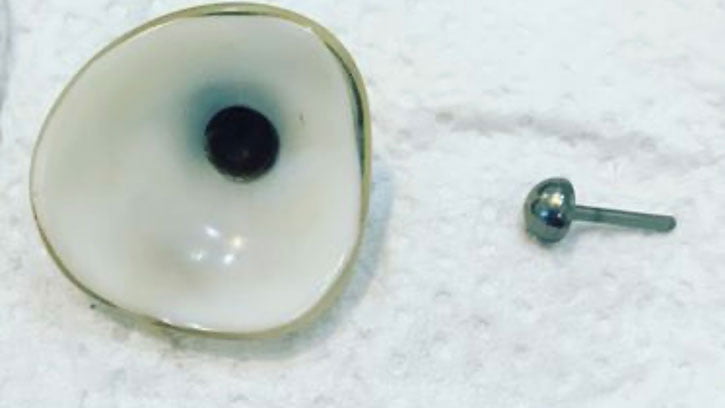Eye implants are known as one of the main components of eye prostheses. By connecting eye implants to the natural muscles of this area, the artificial eye can be moved to a large extent. This article explains the types of eye implants and how the eye prosthesis moves.
History of Artificial Eyes and Ocular Implants
In ancient times, eye evisceration surgery was performed in a way that completely emptied the eye socket. After complete removal, there was no suitable replacement for the injured area. Consequently, the individual could only use a static artificial eye for this purpose. These eyes could not move, and in some cases, the person’s eyelids were also immobile and did not open or close. In the past, the use of this type of ocular prosthesis was most commonly seen in veterans.
The next generation of these prostheses are implants-based ocular prostheses. Ocular implants, by connecting to the muscles in the area, can create limited movement for the prosthesis. These implants are spherical in shape and were initially made of polyethylene. Later versions of these implants were made from materials such as Medpor, alumina, and hydroxyapatite.
How Ocular Implants Are Used
The placement of these implants is done as follows: After the eye is eviscerated, an ocularist creates a custom ocular implant for the patient by taking an impression (molding) of the socket. This implant has a volume roughly equal to the natural eye and is placed within the eye socket.
By connecting the muscles of the eviscerated area to the implant, acceptable movement can be created for the patient’s prosthesis. In many cases, others will not notice that the patient is using an artificial eye.
Later, the use of a peg in the artificial eye became common. These pegs were typically made of titanium or polymer and were inserted into the implant by drilling a hole. After some time of using these pegs, patients experienced severe infections in the area, and for this reason, the use of these pegs became completely obsolete.

Timing of Prosthesis Placement on the Ocular Implant
Today, ocular implants available on the market are mostly made of hydroxyapatite, alumina, or acrylic. These implants provide an artificial eye with a movement range of 30 to 60 percent, which is a sufficient and reasonable amount.
After surgery, 2 months are necessary for the eye tissue to heal. During this time, the sutures and connections of the muscles around the destroyed area to the ocular implant must stabilize. After this period, the eye prosthesis is fabricated based on an impression.
Conclusion
Today, to benefit from adequate movement in this category of prostheses, it is essential to use a device called an ocular implant. These implants are made from materials such as hydroxyapatite, etc. Procedures related to the eye prosthesis must be performed at least 2 months after implant placement.
Dear patients, if you have any questions regarding this matter, or to inquire about exact pricing and for consultation, please contact our specialists at Mahan Ocular Prosthetics Clinic via phone numbers 00982166889076 and 00989128357509, or by visiting the clinic in person at the address provided in the ‘Contact Us‘ section.




No comment